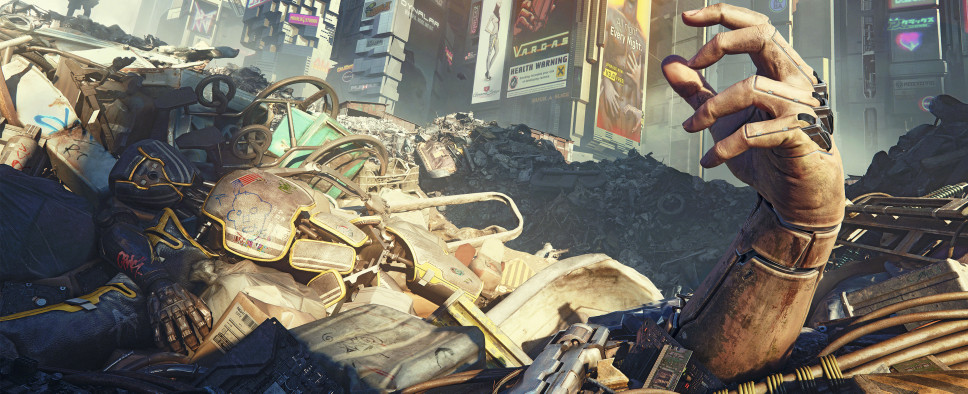Cyberpunk 2077 Interview
-
Category: News ArchiveHits: 1404

“We weren't smart enough to know how many people we needed,” John admits. “When we wrote the initial concept [for Cyberpunk 2077], we didn't know. So, we grew alongside the design as it was developing. And really, you don't know how many cinematic animators you’re going to need until you have a scope for the number of scenes you’re going to have in the game. We didn't have that in the beginning, we just knew we wanted to have cool cinematics and we knew that we were going to be at least as big as The Witcher 3. We ended up hiring a lot more people than what we needed for The Witcher because the fidelity and overall requirements of 2077 crept up on us.”
At a glance, the bustling setting of Cyberpunk 2077’s Night City screams ambition and awe-inspiring potential – cemented by the substantial snippets of gameplay we’ve seen so far. But it’s this first glance where Cyberpunk 2077 sets itself immediately apart from the AAA-pack – Geralt included. Visuals that feel on the cutting edge of what you’d expect to find an open-world RPG. Selling immersion at a scale that boggles the mind. Naturally, the new verticality and high-tech setting of Night City posed technical challenges for the team. Who set about creating this world using the foundation and tools created for The Witcher III.
“The streaming system had to be overhauled because, well, you're moving a lot faster when you’re in a vehicle,” John continues, in a not-so-obvious dig at Roach. “So, we had to rework and rewrite how all that works. Also, there's vertical streaming now. The Witcher is almost like a 2D game in comparison, its world was flat. [With Cyberpunk 2077] you're going up and into huge buildings, so it is a case of vertical and horizontal streaming and hardware speeds impact that. We had to rewrite the tech to support all of that.”

